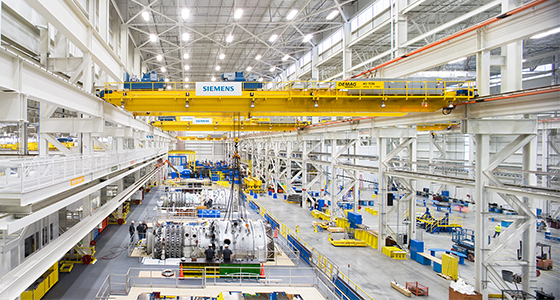Why Henry Ford's Assembly Line No Longer Exists
Nearly everywhere you turn, people are speculating about the fate of U.S. manufacturing. Some of this talk is geared toward positive reinforcement of a manufacturing renaissance, while other talk is mostly negative with some even calling it a myth.

Nearly everywhere you turn, people are speculating about the fate of U.S. manufacturing. Some of this talk is geared toward positive reinforcement of a manufacturing renaissance, while other talk is mostly negative with some even calling it a myth.
So, what’s really going on? I spoke recently with Area Development magazine on this very issue but wanted to dig into it further since there are so many conflicting reports.
The truth is manufacturing is changing. From what my dad witnessed in his time to what I’ve experienced early on in my career to today is a complete transformation. Times have changed. Compare the inside of a factory twenty years ago to that of a plant floor today.
 Siemens Gas Turbine Manufacturing Facility, Charlotte, N.C.
Siemens Gas Turbine Manufacturing Facility, Charlotte, N.C.
I think we can all agree that the above plant image from one of our Siemens projects looks quite a bit different from the plant in which Henry Ford’s first automobile was manufactured. And it should. The 2008 recession was detrimental to the economy, but it was also a turning point for manufacturing. Since that time, numerous technological advances have been introduced and adopted as manufacturing has reinvented itself. Society as a whole has changed, and if American manufacturing had stayed as it was, the United States would fall drastically behind. What’s more, the U.S. and global economy would suffer.
The new look for manufacturing is very advanced. It includes robotic and 3D printing elements that bring more automation but doesn’t completely eliminate the plant worker. While there will be fewer workers going forward – as there is in any industry thanks to the advent of technology – there are also new jobs created as a result of these advances that didn’t and couldn’t exist before.
Although there are naysayers condemning the future of U.S. manufacturing and job growth, our manufacturing customers tell a different story. In fact, they are giving us reasons to be very optimistic about a greater investment in American manufacturing.
For example, look at Walmart. The giant retailer is one of our customers that has laid out a 10-year plan to invest $250 billion dollars in boosting manufacturing jobs in the U.S. This should turn some heads.
“We’re increasing what we buy here & we’re truly committed to this initiative,” the company told us on Twitter.
Other customers, especially foreign customers, are telling us they are looking to the U.S. for its energy – both for the abundance and cost-effectiveness – the close proximity to the American consumer, to avoid the rising costs of international transportation and for the fewer risks associated with the fact that America is a safe place for capital investment. According to the Reshoring Initiative, which is a nonprofit group dedicated to bringing “good, well-paying manufacturing jobs back to the United States,” about 150 companies reshored in 2013. The organization estimates that, since 2010, about 80,000 jobs can be contributed to reshoring companies.
Data from the Bureau of Economic Analysis (BEA) also shows that manufacturers contributed $2.03 trillion to the U.S. economy in 2012. Furthermore, based on statistics and information the National Association of Manufacturers (NAM) has compiled, U.S. manufacturers are the most productive in the world producing high-quality and complex goods such as oil and gas equipment, machinery, technical devices and more.
In our recent GrayWay issue “Making Sense of It All,” Chad Moutray, the chief economist for the NAM, pointed out that 2014 was already showing more positive gains compared to early 2013, which indicates optimism going forward.
These statistics, trends and customer stories give us many reasons to be positive about the future of manufacturing in the U.S. While it’s true the plant scene today looks nothing like Henry Ford’s assembly line in the early 1900s, the shift that manufacturing is experiencing today opens the door for growth and opportunity for American manufacturing now and many years to come.
- Category:
- Opinion
- Manufacturing
Some opinions expressed in this article may be those of a contributing author and not necessarily Gray.
Related News & Insights
Data Centers
Gray Expands Reach with Dallas Office
Corporate News
November 14, 2024Manufacturing, Construction
The Evolving Role of Electric Vehicles in Sustainable Construction & Design
Industry
October 18, 2024Manufacturing
Sustainable Manufacturing Creates a Culture of Caring
Industry